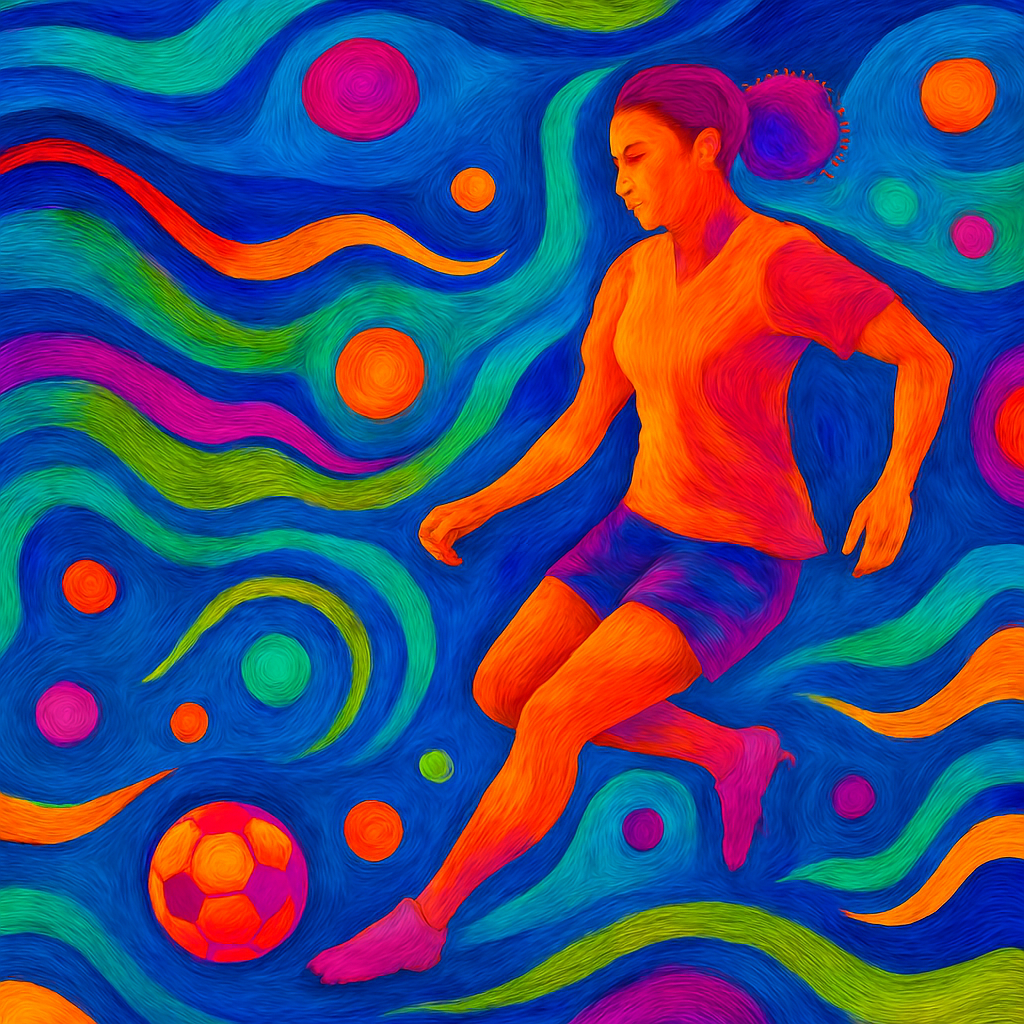
The Amazing Human Spark Behind Sporting Greatness
Human Spark – Why Athlete-Fan Encounters Reshape Identity
Human Spark – The Emotional Architecture of Sporting Encounters
Elite athletes are often perceived as distant icons – symbols of precision, pressure, and performance. But when they step into the lives of everyday people, something profound happens. These moments of connection – brief, unscripted, and deeply human – can shift perspectives, ignite dormant dreams, and restore faith in institutions that feel fractured. The psychology behind these encounters reveals how admiration, empathy, and symbolic identification converge to create lasting change.
Athlete-fan interactions are not just social exchanges – they are emotional catalysts. They offer glimpses into vulnerability, humility, and shared humanity. These encounters often reshape how fans view themselves – and how they interpret excellence. In a world saturated with performance metrics, these moments remind us that greatness is also relational. This post explores the science and social impact of athlete-fan interactions – culminating in a firsthand account of Marnus Labuschagne’s remarkable presence at the Davis Cup in Sydney.
Elite Performance and the Mind – The Cognitive Engine of Sporting Greatness
Elite athletes operate under extreme cognitive and emotional conditions. Their brains are wired for rapid decision-making, emotional regulation, and sustained focus. Research in sports psychology shows that top performers exhibit higher levels of mental resilience and adaptive learning. They train not just their bodies but their minds – using visualization, mindfulness, and goal-setting to maintain peak states.
Neuroplasticity plays a role in how they recover from setbacks and reframe failure. These psychological traits are often invisible to fans but critical to sustained excellence. The pressure to perform is constant – yet elite athletes learn to channel stress into motivation. Their self-concept is tightly linked to performance – making public perception a psychological variable. When they meet fans, they momentarily shift from performer to person. This shift allows for vulnerability, empathy, and connection – qualities that humanize greatness.

Symbolic Identification – Why Fans Feel Changed After Meeting Athletes
Fans don’t just admire athletes – they identify with them. Social Identity Theory explains how people form part of their self-concept around group affiliations. When someone meets an elite athlete, they often experience a symbolic mirroring – seeing traits they aspire to reflected back at them. This identification can be transformative – especially for young people still forming their sense of self. The athlete becomes a living archetype – embodying resilience, discipline, and emotional strength. These encounters often trigger a cascade of psychological effects – increased motivation, improved self-esteem, and a deeper sense of belonging.
The athlete becomes more than a performer – they become a symbol of possibility. This symbolic resonance is amplified when the athlete shows genuine care. Fans walk away not just inspired – but changed. The emotional imprint can last a lifetime.
The Power of Micro-Encounters – Why Brief Moments Matter
Psychologists call it the “thin slice” effect – the idea that people form lasting impressions from brief interactions. In the context of sport, these micro-encounters can be life-altering. A smile, a handshake, a moment of eye contact – these gestures carry emotional weight far beyond their duration. They signal recognition, respect, and shared humanity. For fans, especially those who feel invisible or unheard, these moments validate their existence.
They become part of a larger story – one where they matter. Athletes who understand this dynamic often become powerful agents of change – not through grand gestures, but through consistent presence and care. These moments build trust – and trust builds loyalty. The emotional resonance of a brief encounter can rival the impact of a major win. It’s not the length of the interaction – it’s the depth of the connection.
The Marnus Labuschagne Experience and the Future of Australian Cricket
I Saw Marnus Labuschagne Today – A Moment That Showed
At the Davis Cup in Sydney, I saw Marnus Labuschagne in person – and it was unforgettable. He wasn’t just attending – he was engaging. He moved through the crowd with ease, stopping to talk, smile, and listen. There was no performance, no ego – just genuine warmth. I watched him interact with fans of all ages – from kids clutching cricket balls to older spectators who’d followed the game for decades.
He gave time, attention, and care – and it changed people. I saw young boys light up with joy, parents moved to tears, and strangers suddenly united by admiration. For me, it was a turning point – I became a fan not just of his cricket, but of his character. That moment made me believe again – in sport, in connection, and in the possibility of emotional leadership. Marnus didn’t just show up – he showed up with heart.
The Ripple Effect – How Marnus Is Changing Lives Across Generations
What struck me most was how Marnus’s presence affected people across generations. Young fans saw a role model – someone who embodied kindness and excellence. Older fans saw hope – a reminder that the game still holds integrity. Parents saw someone they’d want their children to emulate. These ripple effects are not abstract – they’re real, measurable, and deeply emotional. Studies in sports psychology show that positive athlete-fan interactions can lead to increased civic engagement, improved mental health, and stronger community bonds.
Marnus didn’t just show up – he showed how to lead with heart. His behavior created emotional resonance – and emotional resonance creates change. These moments become part of family lore – stories passed down, shaping values. Marnus’s impact is generational – and it’s just beginning.

Australian Cricket’s Image Problem – Why This Moment Matters
Australian male cricket has struggled with public perception – plagued by controversies, inconsistent leadership, and a lack of emotional resonance. The team often feels distant – more machine than soul. Marnus’s behavior at the Davis Cup offered a counter-narrative. He showed that emotional intelligence, humility, and fan engagement are not weaknesses – they’re strengths.
His presence was a reminder that cricket can be more than stats and strategy – it can be a source of healing, unity, and pride. If the team embraces this ethos, it could transform not just its image, but its impact. Fans are hungry for authenticity – and Marnus delivered it. His example is a blueprint – one that others can follow. Australian cricket needs emotional leaders – not just technical ones. Marnus is showing the way.
Emotional Leadership in Sport – The New Frontier
Leadership in sport is evolving – moving beyond tactical brilliance to emotional resonance. Athletes like Marnus are pioneering this shift – showing that care, presence, and humility are essential traits. Emotional leadership involves listening, empathizing, and connecting – not just commanding. It builds trust, loyalty, and cohesion. Teams that cultivate emotional leaders often perform better under pressure – because they’re bonded by more than just goals. They share values, stories, and purpose. Marnus’s example is a call to action – for athletes, coaches, and institutions to prioritize emotional intelligence. Emotional leadership is not soft – it’s strategic. It creates environments where people thrive – not just perform. Sport needs more leaders like Marnus – who lead with heart.
The Role of Sport in Social Healing – Beyond the Game
Sport has always been a mirror of society – reflecting its tensions, triumphs, and transformations. In times of division, it can offer unity. In moments of despair, it can offer hope. Athlete-fan encounters are microcosms of this potential – small acts that ripple outward. When athletes engage with fans authentically, they become agents of social healing.
They remind us that excellence is not just about winning – it’s about showing up with heart. Marnus’s moment at the Davis Cup was a healing gesture – one that restored faith in a sport many had grown cynical about. These moments matter – because they rebuild trust. Sport can be a force for good – when its leaders understand its emotional power. Healing begins with presence – and Marnus was fully present.

The Neuroscience of Admiration – Why We Feel Changed
Admiration activates specific neural pathways – including those linked to reward, empathy, and social bonding. When we admire someone, our brains release dopamine – creating a sense of pleasure and motivation. This neurological response is amplified during in-person encounters. Seeing an admired figure up close triggers mirror neurons – allowing us to feel what they feel. This creates a sense of connection and possibility. Marnus’s presence activated these pathways – not just in me, but in everyone around him. It was a neurological and emotional event – one that left lasting imprints. Neuroscience confirms what fans feel – that admiration is transformative. These encounters are not just emotional – they’re biological. Marnus changed minds – and rewired hearts.
The Ethics of Athlete Engagement – Why It Matters
Athletes have ethical responsibilities – not just to their teams, but to their communities. Engagement is not optional – it’s integral. When athletes ignore fans, they miss opportunities for impact. When they engage, they become ethical leaders. Marnus’s behavior exemplified this ethic – showing that care is a form of leadership. He didn’t just meet fans – he honored them. This ethic is especially important in youth development – where role models shape values. Marnus’s example sets a standard – one that other athletes should follow. Ethical engagement builds trust – and trust builds legacy. Sport needs more ethical leaders – and Marnus is leading the way.
The Future of Fan Culture – Toward Emotional Reciprocity
Fan culture is evolving – moving from passive admiration to active engagement. Fans want more than performance – they want presence. They seek emotional reciprocity – moments where admiration is returned with care. Athletes who understand this dynamic build stronger, more loyal followings. Marnus’s moment at the Davis Cup was a masterclass in emotional reciprocity. He didn’t just receive admiration – he gave it back. This shift is reshaping fan culture – making it more relational, inclusive, and transformative. Fans now expect authenticity – not just access. They want to feel seen – not just entertained. Marnus’s approach signals a new era – one where emotional connection drives loyalty.
The Role of Events – Why Context Matters
The Davis Cup provided a unique context – a space where sport, culture, and community intersected. Marnus’s presence wasn’t just symbolic – it was strategic. By showing up at a tennis event, he crossed boundaries – signaling unity across sports. This kind of cross-pollination strengthens the sporting ecosystem – creating shared narratives and broader engagement. Context matters – and Marnus used it wisely. His presence elevated the event – and expanded its emotional reach. Fans who came for tennis left with a renewed love for cricket. These moments blur the lines between disciplines – building bridges across fandoms. Events like this become emotional amplifiers – multiplying the impact of athlete engagement. Marnus didn’t just attend – he transformed the space.

The Emotional Economics of Sport – Why Care Builds Value
Emotional connection drives economic value – in sport, loyalty translates into attendance, merchandise, and long-term engagement. Athletes who build emotional bonds with fans create sustainable ecosystems – not just fleeting hype. Marnus’s behavior at the Davis Cup wasn’t just kind – it was economically smart. Fans who feel seen are more likely to support, invest, and advocate. Emotional resonance builds brand equity – turning admiration into action. Teams that ignore this dynamic lose cultural relevance – and financial momentum. Marnus’s approach shows how emotional leadership can be a strategic asset. Care is not a cost – it’s a multiplier. The economics of sport are shifting – and emotional intelligence is now central. Marnus is ahead of the curve – and Australian cricket should take note.
The Legacy Factor – How Small Moments Shape History
Legacy is built in moments – not just milestones. Marnus’s interaction at the Davis Cup may seem small – but its impact is lasting. Fans will remember how they felt – not just what they saw. These emotional memories become part of sporting history – shaping how athletes are remembered. Legacy is emotional architecture – built through care, presence, and connection. Marnus’s legacy is already forming – not just through runs, but through relationships. He is crafting a narrative of humility, warmth, and leadership. These qualities endure – long after stats fade. Fans pass these stories down – embedding them in cultural memory. Marnus’s legacy is alive – and growing with every encounter.
The Call to Action – What Sport Must Learn from Marnus
Sport must evolve – and Marnus is showing the way. Emotional leadership, ethical engagement, and symbolic presence are no longer optional. They are essential to relevance, impact, and longevity. Teams must train athletes not just in technique – but in empathy. Institutions must prioritize fan connection – not just performance metrics. Marnus’s example is a blueprint – one that others can adapt. Sport must become more human – more relational, more inclusive. The future belongs to those who lead with heart – and Marnus is already there. Australian cricket has an opportunity – to rebuild its image through emotional resonance. The time to act is now – and the path is clear.

Conclusion – The Human Architecture of Sporting Greatness
Sport is not just about performance – it’s about presence. Athletes like Marnus Labuschagne remind us that greatness is not measured solely in runs or trophies – but in moments of care, connection, and emotional leadership. His behavior at the Davis Cup was more than impressive – it was transformative. It changed lives, restored faith, and offered a new vision for Australian cricket.
In a world hungry for authenticity, athletes who show up with heart become more than players – they become symbols of hope. These moments matter – because they build emotional infrastructure. They shape how we see sport – and how we see ourselves. Marnus didn’t just represent cricket – he represented possibility. His presence was a gift – and a challenge to others to rise. Greatness begins with care – and Marnus showed us how.
Join the Discussion – What Moments Have Moved You
Have you ever met an athlete who changed your perspective – even briefly. What did that moment mean to you – and how did it shape your view of sport, leadership, or yourself. These stories are more than memories – they are cultural threads. They connect us across generations, disciplines, and identities. Your moment matters – and it belongs in the conversation.
#EmotionalLeadership #SportingGreatness #MarnusLabuschagne #AustralianCricket #FanCulture #AthleteImpact #DavisCupSydney #SymbolicPresence #LegacyMoments #HumanConnection



hiI like your writing so much share we be in contact more approximately your article on AOL I need a specialist in this area to resolve my problem Maybe that is you Looking ahead to see you